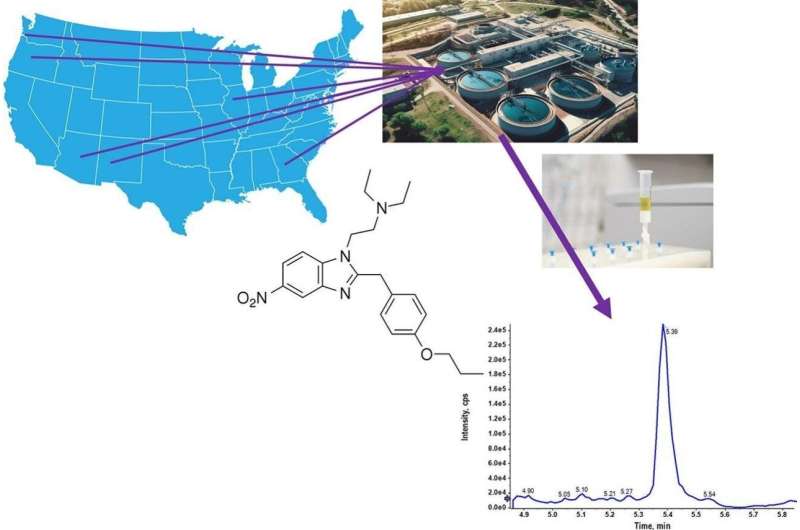This article has been reviewed according to Science X's editorial process and policies. Editors have highlighted the following attributes while ensuring the content's credibility:
fact-checked
peer-reviewed publication
trusted source
proofread
Deadly opioid detected in wastewater for the first time

University of Queensland researchers and international collaborators have found a deadly synthetic drug in wastewater in the United States—the first such detection globally.
Dr. Richard Bade from UQ's Queensland Alliance for Environmental Health Sciences led a team that analyzed wastewater samples from eight locations in seven US states: Arizona, Georgia, Illinois, New Jersey, New Mexico, Oregon, and Washington.
Dr. Bade said wastewater from two of the sites, in Illinois and Washington, recorded a type of opioid called protonitazene.
"Protonitazene is a novel synthetic opioid around three times more potent than fentanyl, and even very small amounts can produce life-threatening toxic effects," Dr. Bade said.
"The protonitazene found in Illinois wastewater was at a level below the quantification limit of our instrument, but the wastewater from Washington contained protonitazene at approximately 0.5 nanograms per liter."
Dr. Bade said the detection was concerning.
"Novel synthetic opioids are a leading contributor to overdose deaths worldwide, with protonitazene itself linked to several fatal overdoses in the United States," he said.
"These synthetic drugs have been detected in substances typically sold as other opioids such as oxycodone, fentanyl, and heroin, as well as in products containing benzodiazepines and cocaine.
"Novel synthetic opioids were initially developed in the 1950s by the pharmaceutical industry, but they were never approved as medicines.
"More recently, illegal laboratories have started developing synthetic opioids as stand-alone products."
The US wastewater samples were collected over nine days between December 2022 and January 2023.
The samples were acidified, flash frozen, and sent to Arizona State University for sample processing before being sent on to UQ's lab in Brisbane for analysis.
"Our study and results highlight the importance of wastewater surveillance to detect new and dangerous drugs so that even when minor amounts are detected, this is recognized by health authorities and relevant government bodies," Dr. Bade said.
The study is published in the journal Science of The Total Environment.
More information: Richard Bade et al, Wastewater-based monitoring of the nitazene analogues: First detection of protonitazene in wastewater, Science of The Total Environment (2024). DOI: 10.1016/j.scitotenv.2024.170781


















